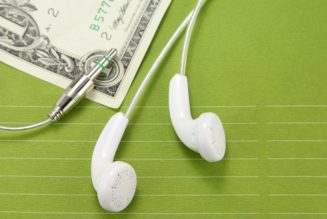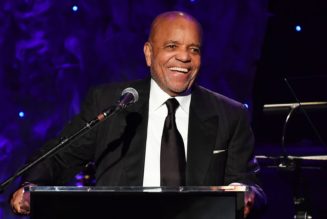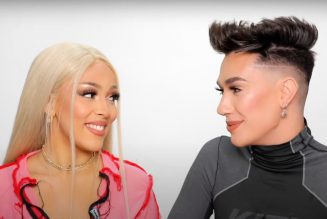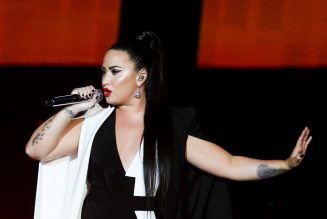
What we’ve heard of “Easy On Me” so far sounds much like the Adele that the world fell in love with a decade-plus ago. But even if the sound of her new music is in line with her earlier blockbusters, the music industry has evolved at a rapid pace since 2015. Her continued streak of hits is close to a foregone conclusion, but what success looks like in 2021 is slipperier and harder to define by the old metrics. Here are five ways that the music industry has changed since we last heard from Adele.
Streaming windows have gone out of style
Back in the mid-2010s, streaming services like Spotify and Apple Music had already begun reshaping music consumption and driving down traditional sales even further from the decline previously brought about by filesharing at the turn of the century. But A-list artists like Adele and Taylor Swift were still focused on selling their albums, whether on physical formats like CD and vinyl or digitally on iTunes, to the point that their new albums would be initially withheld from streaming formats. For a time, the “no-streaming window” looked like it could become an industry standard, much like major films that only reach DVD and on-demand services after a few months in theaters.
Adele’s 25 wasn’t on streaming services at all (besides the lead single “Hello”) until June 2016, over seven months after the album became available for purchase. On a smaller scale, Taylor Swift — who had kept her music off streaming services entirely for three years starting in 2014 — withheld 2017’s Reputation from streaming until 3 weeks after the album’s release. And for a time, Tidal was scoring exclusive rights to stream albums by the likes of Kanye West and Rihanna upon their initial release.
In recent years, however, streaming windows have largely disappeared, and most major releases have been available for purchase or streaming simultaneously on all platforms. What’s more, it feels like even superstars like Adele or Swift would be sacrificing far too much in terms of first-week numbers and cultural relevance if they continued to “paywall” albums, so to speak, for a few weeks or months. If anybody still has the clout to try it, it’s Adele, who sold 9.5 million copies of 25 for over three quarters of the album’s total — but it feels highly unlikely she’ll go against the prevailing headwinds on streaming for 30.
Slow songs face even more radio resistance
In the ‘80s and ‘90s, ballads by artists like Whitney Houston and Boyz II Men ruled the Hot 100 regularly, but the chart dominance of balladry has been on the wane for most of the new millennium so far. When “Someone Like You” became Adele’s second Hot 100-topper in 2011, she bucked every trend by making a spare and stately piano ballad as big as any dancefloor smash by Lady Gaga or Katy Perry. It was, remarkably, the first No. 1 in Hot 100 history comprised of only piano and vocals, and the first chart-topper without a drum beat of any kind in the four years since “Hey There Delilah,” the 2007 acoustic smash by Plain White T’s. A few quieter chart-toppers followed in 21’s wake like “When I Was Your Man” by Bruno Mars and “Somebody That I Used to Know” by Gotye and Kimbra, but dance pop and hip-hop remained the norm on the pop charts.
Although Justin Bieber’s acoustic “Love Yourself” topped the Hot 100 a few weeks after Adele’s last number one, “Hello,” softer songs have been an especially minor presence at number one in recent years: Ed Sheeran and Beyonce’s “Perfect,” Lady Gaga and Bradley Cooper’s “Shallow” were islands in a sea of more danceable songs. This year, Olivia Rodrigo’s blockbuster debut solo single “Drivers License,” with its novel mix of traditional balladry and modern electronic production, became a rare phenomenon, joining “Someone Like You” and Mariah Carey’s “We Belong Together” as one of the few truly iconic 21st century ballads.
In the streaming era, major stars have regularly debuted at the top of the singles charts with songs with widely varied sounds and tempos, but radio seems less likely to embrace the softer No. 1 hits, which also tend to have a shorter streaming shelf life. When Taylor Swift released a pair of spare, intimate albums in 2020, both albums sent a lead single to the top of the Hot 100: “Cardigan” from Folklore and “Willow” from Evermore. But those streaming-driven chart victories were short-lived and neither song took off at pop radio: both peaked at No. 17 on Billboard’s Pop Songs chart, which Swift had topped nine times with previous singles. Ariana Grande and Justin Bieber’s waltzing lockdown Hot 100-topper “Stuck With U” similarly only got to No. 14 on Pop Songs. And the slowest of BTS’s six Hot 100 chart-toppers, “Life Goes On,” never even cracked Billboard’s Radio Songs chart.
The brief video clip that Adele tweeted on October 5th announcing “Easy On Me” featured about 13 seconds of plaintive piano chords. It remains to be seen if the song will be as minimally produced as “Someone Like You” or a more bombastic power ballad like “Hello,” but Vogue writer Giles Hattersley described the song as having a “slow, meditative arrangement” after Adele previewed the song for him. Perhaps “Easy On Me” will blanket the airwaves for months, but there’s a very real possibility that it will briefly top the Hot 100 without ever catching on at radio. After all, the slowest single from 25, “When We Were Young,” underperformed, missing the Hot 100’s top 10.
Million-selling first weeks are an endangered species
Selling a million copies of an album in the first week wasn’t exactly easy before streaming, but it was a semi-annual occurrence that often marked the arrival of an act (like *NSYNC or Lil Wayne) to the upper reaches of pop stardom. Lately, however, it’s started to feel like a thing of the past: Taylor Swift’s Reputation was the last album to go platinum in a week, with 1.24 million album equivalent units in its first seven days. In the last four years, the only two albums to come particularly close were also by Swift: 2019’s Lover opened with 867,000 album equivalent units, and 2020’s Folklore opened with 846,000.
For superstar rappers whose fanbases more heavily favor streaming, and sometimes forego physical releases entirely, a one million week now seems completely unreachable. In September, Drake’s Certified Lover Boy shattered Apple and Spotify’s streaming debut records, but with 613,000 album equivalent units for its first week, it actually had the lowest first-week tally of Drake’s proper albums since his 2011 debut Thank Me Later.
Adele’s last album, 25, is of course in a much more exclusive club: It’s the only album to sell 3 million in the first week, and the only album to sell over a million in a week twice. Given current industry trends, it seems impossible to top that feat now — especially without withholding the album from streaming services — so 30’s first week will likely land somewhere below 3 million, but above Taylor Swift’s recent high water marks. The question, of course, is where, and that leaves a couple million possible answers.
Vinyl is outselling CDs now
One of the biggest changes in album sales in recent years has been the comeback of vinyl. Over 13 million vinyl records were sold in the U.S. in 2016, and that number more than doubled to 27 million in 2020, with vinyl on pace to outsell compact discs in 2021 for the first time in over 30 years. For Adele’s biggest albums, CD sales remained impressively consistent: CDs accounted for roughly 51% of the sales of both 21 and 25. And vinyl had just a minor uptick, representing about 1.5% of 21’s total sales and over 2% of 25’s total sales.
Much of modern surge in vinyl sales has been for perennial catalog favorites like Fleetwood Mac’s 1977 classic Rumours, but younger artists with an old-fashioned pop/rock sound like Harry Styles have done big business in vinyl as well. The One Direction singer’s second solo album Fine Line was the top U.S. vinyl album of 2020, moving 232,000 units. When vinyl copies of Taylor Swift’s Evermore finally became available in May, the album sold 102,000 vinyl copies in a week (many of them pre-orders from months earlier), resulting in the biggest week for vinyl since MRC Data began tracking sales in 1991, and accounting for well over a tenth of Evermore’s total sales.
Adele will still probably sell more CDs than anyone else by far in 2021. But if Columbia presses up a lot of vinyl for her new album, she could break some records in that sector as well.
Album campaigns have gotten shorter
Although Beyonce-style surprise releases are not as in vogue as they once were, the length of a pre-release campaign for major albums has shrunk in recent years. The two months between the release of “Rolling In The Deep” and 21, or even the one month between “Hello” and 25, might be considered lavish rollouts today, when the latest albums by Taylor Swift, Drake, and Kanye West have all arrived without any previously released singles, and Ariana Grande’s last album arrived with only a week’s warning. While some artists may drop an additional promotional single or two in the weeks running up to an album, Adele has never needed to do that, and we probably won’t hear much — maybe nothing at all — beyond “Easy On Me” between now and 30’s release, scheduled for Nov. 19, five weeks after “Easy.”
And with the faster pace of the cultural conversation now, it can be difficult for even big artists to keep an album visible beyond its initial release cycle. A precious few hit albums have had long legs in recent memory – Dua Lipa’s Future Nostalgia and The Weeknd’s After Hours each kept spinning off hits for well over a year. But it’s hard to keep an album on the charts for that long now without adding new content, whether with star-studded remixes, or deluxe editions featuring more songs (both strategies that Lipa and The Weeknd utilized). And the rise of TikTok has helped extend the life of some albums in spontaneous ways that artists and their labels never anticipated: the #SilhouetteChallenge sent Doja Cat’s “Streets” into the top 20 over a year after the release of her Hot Pink album.
With the slow pace at which she’s made albums, it’s hard to imagine Adele adding several new songs to a deluxe edition of 30 a few months after the initial release. So if the album is to have a long shelf-life, it will likely do so in old-fashioned ways: music videos, TV performances, touring, and genuine fan enthusiasm for the songs.











